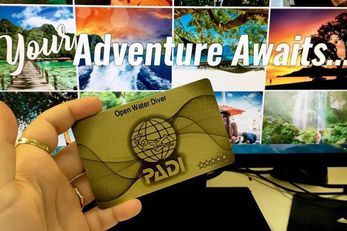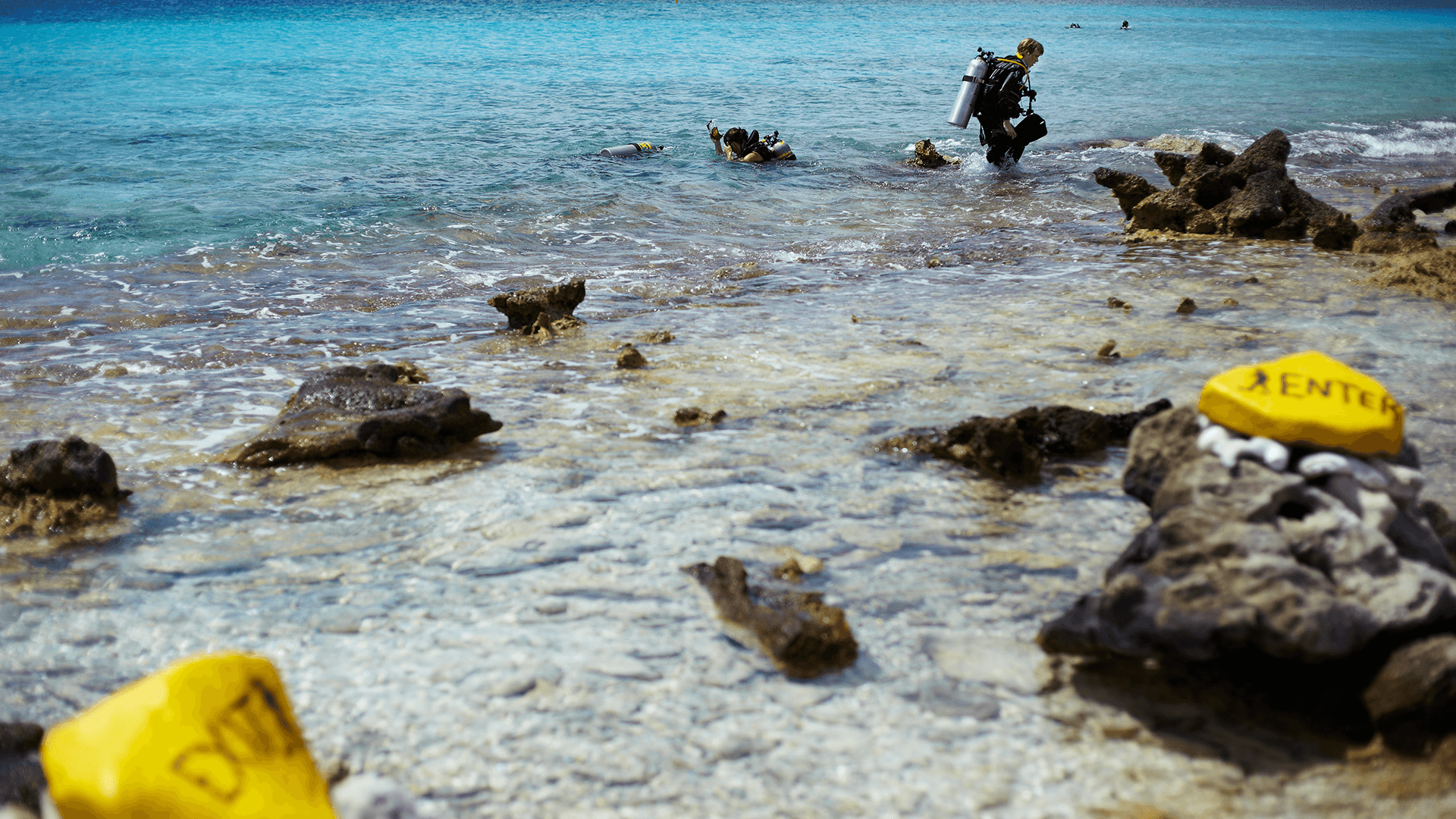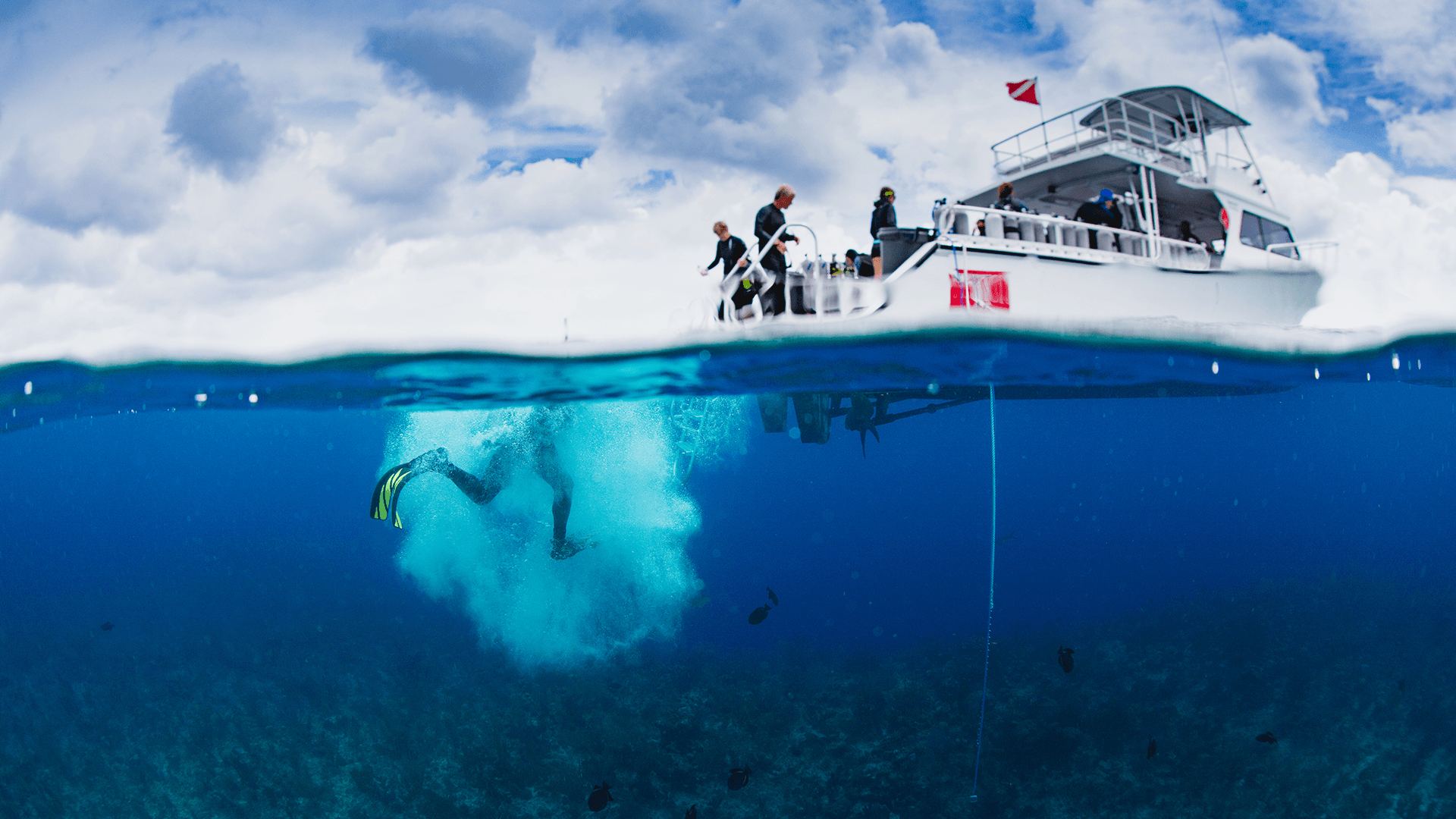
Three Tropical Islands That Are Ideal For New Divers

Congratulations. You've earned your dive certification and checked one more item off the bucket list. Now, it's time to put that C-card to use, and venture beyond the local lake or quarry on your first real dive vacation to the tropics. But where? It's a question we are often asked at Caradonna Adventures. There are dozens of great dive destinations to choose from, but some are better suited to new divers than other. The best offer consistently clear, calm sea conditions, a range of shallow to mid-depth dive sites, and healthy reefs. There should be chances for shore dives, short boat rides to numerous sites, and a well-developed dive culture where shops, dive masters and boat crews accommodate divers with a broad range of backgrounds and experience levels. Add these factors together, and three special Caribbean destinations come to the front. We've sent hundreds of divers to these islands, and all three are ideal for your first dive vacation.

A Shore Thing
“Easy shore diving and a laid-back island vibe make Bonaire one of my favorite places to bring first-time divers,” says Caradonna Field Editor, Pierce Hoover. He particularly likes the selection of dive-centric resorts set along the island's calm western coast, where the corals grow in shallow water just a few yards from shore. “Scuba doesn't get much easier than this,” he says. “You can start off by gearing up on the beach or from a dock, with resort's dive staff right there to help if need be.” This takes the pressure off new divers, he says, because they are able to take their time and immerse when they are ready. “As compared to boat diving, which happens on a schedule and puts your elbow to elbow with other divers, this can be a plus for first-timers,” Hoover says.” And that's just the beginning. There are more than 50 shore dives spaced along Bonaire's west coast, and all you need to reach them is a rented pickup truck. Yellow-painted rocks are placed along the coastal highway to mark parking spots for each site, and after gearing up on the tailgate, you just wade right in. “When my son earned his junior open water certification, we headed to Bonaire, rented a truck and spent a great week logging his first dozen open water dives,” he recalls. “We started shallow and easy, then as he built confidence and experience, we were able to transition to dusk and then night dives, and make his first boat dive and even an easy wreck dive.”

Dive Central
For decades, the Cayman Islands have remained the number one dive destination in the Caribbean. “With 365 dive sites spread across three islands, it's literally possible to visit a different underwater environment every day of the year,” says Caradonna Agent, Doris Pfister. The Caymans first gained fame as a wall diving mecca, she says. Close to walls, reefs transition to underwater cliffs that plummet to depths of more than a mile. These sheer profiles combine with the region's exceptionally clear water to create the sensation of weightless flight when divers hover on the edge of a wall. This level of vertical exposure might seem a bit extreme for new divers, but the general absence of strong currents in the Cayman Islands and the attentiveness of dive masters make it a safe thrill. “And there's more to the Caymans than walls,” Pfister says. There are coral reefs that begin shallower and closer to shore, plus some easily-viewed shipwrecks. There are several areas suitable for shore diving, and of course, there's Stingray City, which is not just for snorkelers. When visiting this famous site, divers have the advantage of being able to slip off into deeper water on the edges of the sandbars, where they escape the crowds and enjoy more personal encounters with the rays. Over the past 30 years, Caradonna has sent thousands of new divers to the Cayman Islands, and have always found it was an ideal destination for building on the basic skills learned during certification, while also experiencing one of the world's most popular diving destinations.

Join the Party
The Bay Islands of Honduras—Roatan, Utila and Guanaja—sit at the southern end of the Great Mesoamerican Barrier Reef. All three islands attract their share of divers, with Roatan claiming the lion's share of both certified and would-be divers. “For affordability, ease of diving, and the added attraction of shore diving, Roatan is hard to beat,” says Caradonna's VP, Cameron Akins. “The reefs are colorful, the waters clear and calm, and there's an abundance of marine life to discover.” It's estimated that more than 2,000 new divers earn their C-cards on Roatan each year, and the island is home to dozens of dive schools and instructor development centers. This thriving certification trade has created a dive-centric culture that permeates the island. The same conditions that make Roatan an ideal place to learn to dive provide similar appeal to newly-minted divers. Many dive resorts face house reefs that can be accessed from shore at any time to practice skills or gain confidence. In addition, Roatan represents a real value in terms of dive packages, Akins says. “For example, Anthony’s Key offers a very cost-effective 6 day, a 3-tank package that also includes a night dive and unlimited shore diving,” she says. “This provides a lot of bottom time for your money.” One additional recommendation Cameron usually makes when sending a group to the Bay Islands is to save a day or two for an adventure on the Honduran mainland. Roatan is just a ferry ride away from the coastal town of La Ceiba, which is the gateway to jungle adventures in Pico Bonito National Park, or a puddle jumper flight to San Pedro Sula and the enchant Mayan city of Copan.

Ready to plan your own diving adventure? Drop us a note at sales@caradonna.com or give our office a call at 800-330-6611. We know all about the underwater scene on these islands, and many more of the best diving destinations in the Caribbean and around the globe.